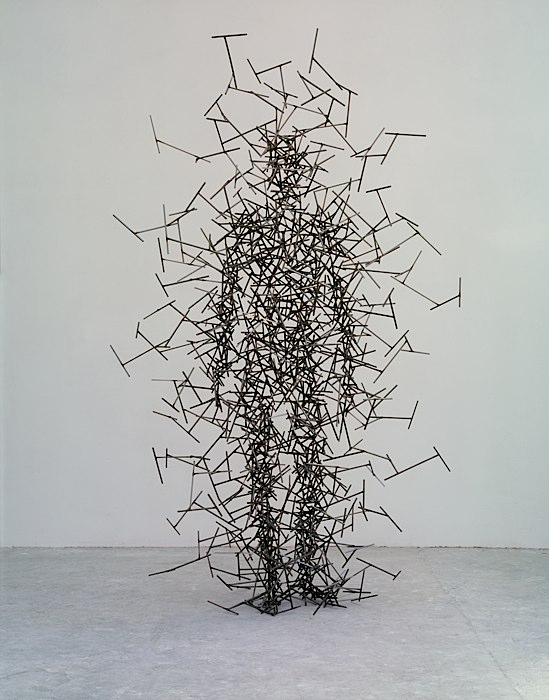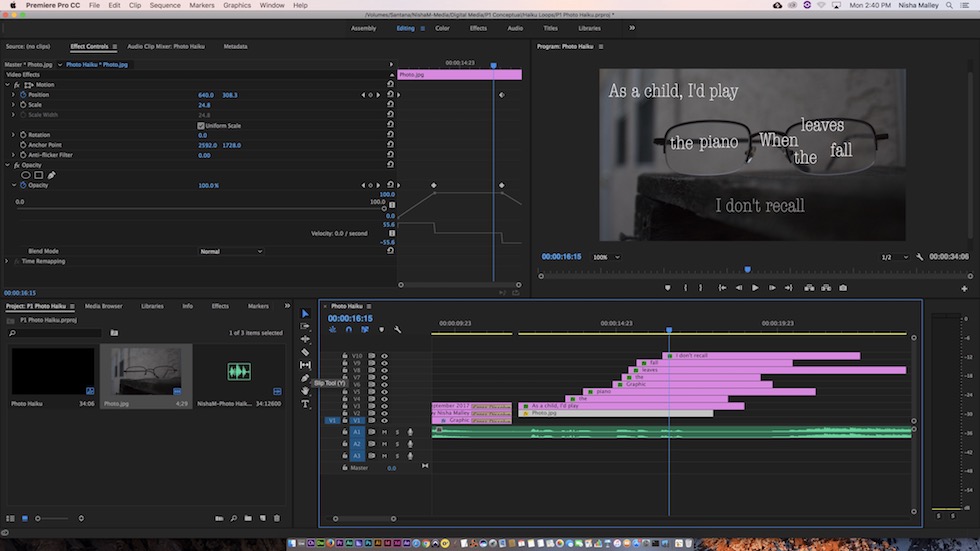For this unit, we practiced mostly conceptual art, or art that illustrates a metaphor and deeper meaning. In English class we wrote different conceptual poems, experimenting with different structures and styles, and in our Digital Media class, we used the video editing software Adobe Premiere Pro and ProTools, a music software, to visual our work in English. In addition, we also took and edited photos in Photoshop as part of Design class. The following sections showcase the work that I completed during that time.
For the poetry unit in English, we wrote a haiku, ekphrastic poem, and a spoken word poem. The goal of the haiku poem was to convey a particular emotion, paired with a random action, in a metaphorical way.We all picked a random feeling and action, which were written on pieces of paper and sat together in a container, so we learned to explore ideas, emotions, and actions that we may otherwise not have considered. Some of us also got strange pairings of an emotion or action, so I learned to look at something beyond its face value and think more intrsopectively and deeply. With the spoken word poem, we were given the freedom to choose any topic and write a poem without any restraints. The major difference is that spoken word poem requires special attention to cadence and word sounds, so I experimented with different rhythms and and alliterations in my poem. Finally the ekphrastic poem required us to write in response to work of art, to explore our reaction to it and emulate what the artist was trying to convey in poetry form. When we visited the San Francisco Museum of Modern Art as a class, I selected a work of art that intrigued me and wrote a poem about it.
"Ekphrasis" means a literary description of or commentary on a visual work of art. At the San Francisco Museum of Modern Art, I found a piece of art that I chose to explore in my ekphrastic poem. The art installation, title Quantum Cloud VIII, was designed by Antony Gormley in 1999, and was a life-size human constructed by welding short and small steel metal sticks together and created the effect of a whole but airy human. The artist said they were exploring space and the fluidity of particles. I admired this concept, so in my ekphrastic poem, I tried to embody the idea of a person who is fluid, in their mental and physical form. They lack basic human components - a face, organs, human tissue - but they clearly represent a human. Rather, this person is moving through the world disguised by the air that flows through it. I also kept the human androgynous in my referencing of the metal person, as I felt this also mirrored the idea of fluidity among beings.


Quantum Cloud VIII,
Like an empty welded machine,
Emerges from a dark and distilled universe.
Thin metal rods held by the air,
No eyes, no face, no heart.
Who recognizes the inconspicuous villain?
the disguiser
shielded by vacant space.
Ze fades in
and
out of being.
For the spoken word poem, we were given complete freedom to choose whatever subject we were interested, and there were no constrainsts or structure that we were required to follow, similar to the free verse poem. However, we were instructed to pay attention to the rhythm and sound of our poem, as a spoken word poem should have a special cadence to it. I chose to write about a reocurring event in my life, which is coming home every day to an unkempt, dirty room. I employed alliteration several times throughout my poem, and I tried to create a sense of rhythm by listing the various items in my room.
For the free verse poem, I wrote a poem connected to my artist statement - "I am exploring the feeling of desperation through the experience of watching children play." A free verse poem has no restrictions, so we were able to choose the length, structure, and style of our poem. I wrote a descriptive poem, narrating a picture of two children exploring a decrepid old stone building with disintegrating paper walls and an out of place modern elevator leading to an undisclosed location. Out of wonder and curiosity, the children lightheartedly explored the isolated realm - the tower is described as magical. Yet, it is also old, dusty, and fading, representing their fading childhood. At the end of the poem, the children step on the elevator and leave the tower behind, making terms wit the end of their childhood.


